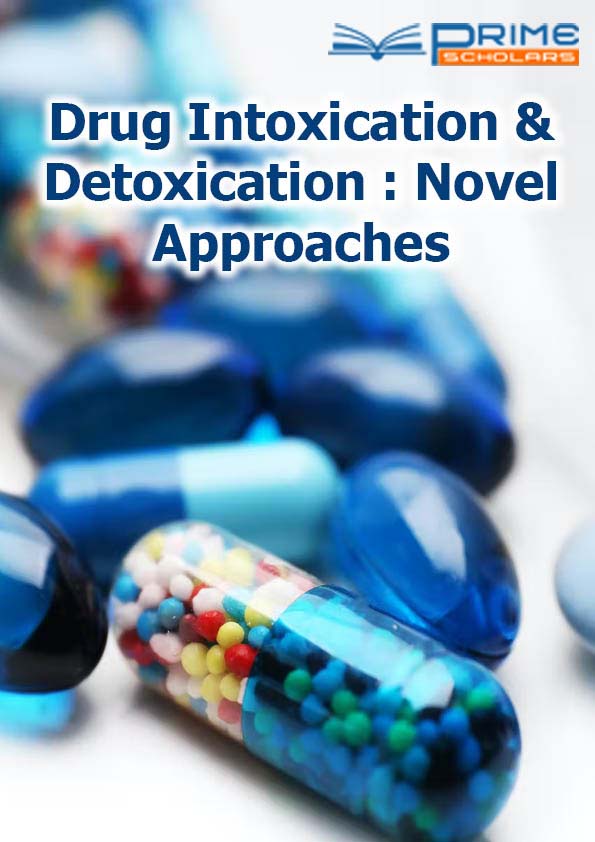Commentary - (2023) Volume 4, Issue 2
Uses of Metabolomics in Scientific Toxicology and Forensic Medication
Michael Ciborowski*
Department of Forensic Medicine, Medical University of Bialystok, Poland
*Correspondence:
Michael Ciborowski,
Department of Forensic Medicine, Medical University of Bialystok,
Poland,
Email:
Received: 31-May-2023, Manuscript No. DIDNA-23-16834;
Editor assigned: 02-Jun-2023, Pre QC No. DIDNA-23-16834 (PQ);
Reviewed: 16-Jun-2023, QC No. DIDNA-23-16834;
Revised: 21-Jun-2023, Manuscript No. DIDNA-23-13834 (R);
Published:
28-Jun-2023, DOI: 10.36648/DIDNA 4.2.14
Description
Scientific toxicology and forensic medicine are unique among
other clinical disciplines because they are fundamentally justifiable
practices, especially in civil and criminal cases. Recent
high-throughput advances in science and physics have shown
that metabolomics, the youngest of the ‘omics sciences’, can
be one of the most useful tools for examining changes in the
criminological field. Metabolomics follows a special strategy
that considers the estimation of metabolic changes in multicellular
networks using two different methods. Concentrated
and unconcentrated. Targeted studies focus on a known number
of characterized metabolites. Untargeted metabolomics
means capturing all metabolites present in the sample. In both
cases, various fact-based methods (univariate or multivariate
measurements, AI, etc.) can be applied to obtain useful and
meaningful data. The purpose of this audit is to present the
challenges of metabolomics in measurable toxicology and scientific
medicine.
Metabolomics studies can be performed using a variety of
methods. The most comprehensive method is metabolic fingerprinting,
which preferably requires quantification of all
metabolites present in enriched samples. In principle, the
currently used scientific methods cannot quantify all metabolites
present in natural samples. Subsequently, we expect to
increase metabolome inclusion by combining several methods
of decomposing similar examples. Metabolic fingerprinting,
also called untargeted metabolomics investigations, can be
performed using atom-induced reverberation (NMR) or mass
spectrometry (MS) combined with one of the following splitting
processes:
Liquid chromatography (LC), gas chromatography (GC), or lean
electrophoresis (CE). In contrast to MS, NMR is less reactive
but more reproducible. Furthermore, NMR is quantitative in
nature and requires a small sample assembly that does not adversely
affect the sample. Different classes of metabolites are
distinguished, depending on the elimination strategy associated
with MS. GC-MS can be used to quantify metabolites that
are labile or that can undergo unpredictable conformational
changes. CE-MS helps discover polar and ionogenic metabolites.
At the same time, LC-MS can be used to measure polar
(hydrophilic liquid chromatography) and non-polar (switch
stage chromatography) metabolites, depending on the type of
chromatography used. For non-targeted studies, the use of a
high-target MS analyzer, usually an Orbitrap or Season-of-Flight
(TOF) MS analyzer is required. A similar logical strategy can be
used for other metabolomics approaches such as metabolic
profiling and metabolite targeting. In any case, these methods
estimate recently identified metabolites. Metabolic profiles
are metabolites belonging to a particular class (e.g. unsaturated
fats, amino acids) or metabolites from particular metabolic
pathways (e.g. arachidonic acid and its cyclooxygenase (COX)
and lipoxygenase (LOX)-away metabolites).
Conclusion
Traditional investigative strategies may not be persuasive in
NPS screening at this time. As the screening approaches, identification
of drug use beyond one or more notable metabolites
is likely, especially if the parent compound itself is not detected
in the sample. However, due to the normal, essential metabolites
of some fundamentally related compounds, other minor
metabolites may also be important in proving the approval of
certain illicit drugs.
Acknowledgement
None.
Conflict Of Interest
The author’s declared that they have no conflict of interest.
Citation: Ciborowski M (2023) Uses of Metabolomics in Scientific Toxicology and Forensic Medication. Drug Intox Detox: Novel
Approaches. 4:14.
Copyright: ©2023 Ciborowski M. This is an open-access article distributed under the terms of the Creative Commons Attribution
License, which permits unrestricted use, distribution, and reproduction in any medium, provided the original author and source
are credited.
